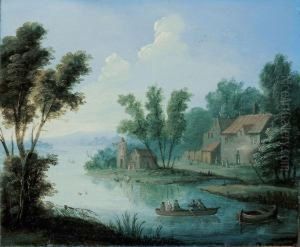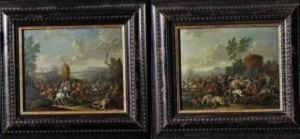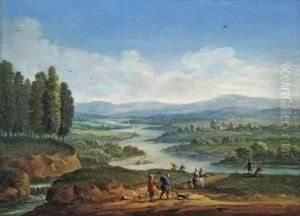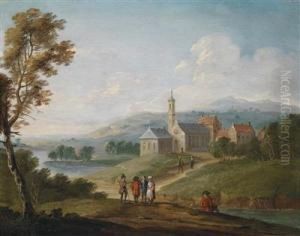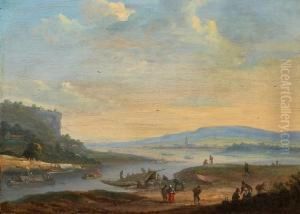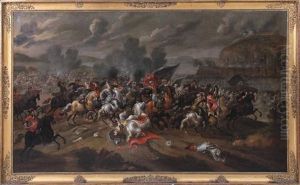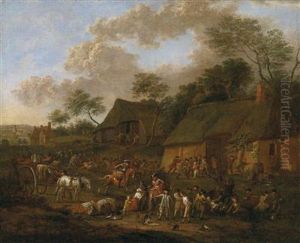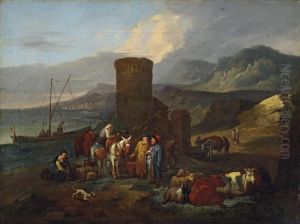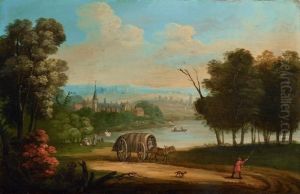Jan Peeter Van Bredael D. J. Paintings
Jan Peeter van Bredael the Younger was born into a renowned family of artists in Antwerp, Belgium, in 1683. He was part of the Bredael family of painters, which included his grandfather, Peeter van Bredael (1629–1719), who was known for his market and village scenes, and his father, Jan Frans van Bredael the Elder (1686–1750), celebrated for his landscapes and battle scenes. The Bredael family played a significant role in the Antwerp art scene during the 17th and 18th centuries, contributing to the city's reputation as a vibrant artistic center. Jan Peeter the Younger was trained in the family tradition, mastering a wide range of subjects including genre scenes, landscapes, and battle scenes, but he is especially noted for his detailed and lively representations of battles and equestrian subjects.
Throughout his career, Jan Peeter the Younger developed a style that, while rooted in the Flemish tradition, also incorporated influences from the Italianate landscape painters of his time. His works are characterized by their dynamic compositions, meticulous attention to detail, and vibrant color palette. He had a particular talent for depicting the chaos and drama of battle scenes, often focusing on the heroism of the individual within the larger conflict. These paintings not only demonstrate his skill in composition and narrative but also reflect the ongoing European conflicts of his era, serving as a visual documentation of military history.
Van Bredael's landscapes and village scenes, on the other hand, offer a more peaceful and idyllic perspective, showcasing his versatility as an artist. These works are imbued with a sense of tranquility and are often populated with figures engaging in daily activities, set against the backdrop of lush, detailed environments. His ability to capture the light and atmosphere of these settings has been praised for its realism and poetic quality.
Despite his talent and the quality of his work, Jan Peeter van Bredael the Younger is not as widely recognized today as some of his contemporaries. However, his contributions to the Flemish painting tradition have been appreciated by art historians and collectors, and his works are held in several important collections across Europe. Jan Peeter van Bredael the Younger passed away in Antwerp in 1735, leaving behind a legacy that, while perhaps overshadowed by the more famous members of his family, remains an important part of the Flemish artistic heritage.
